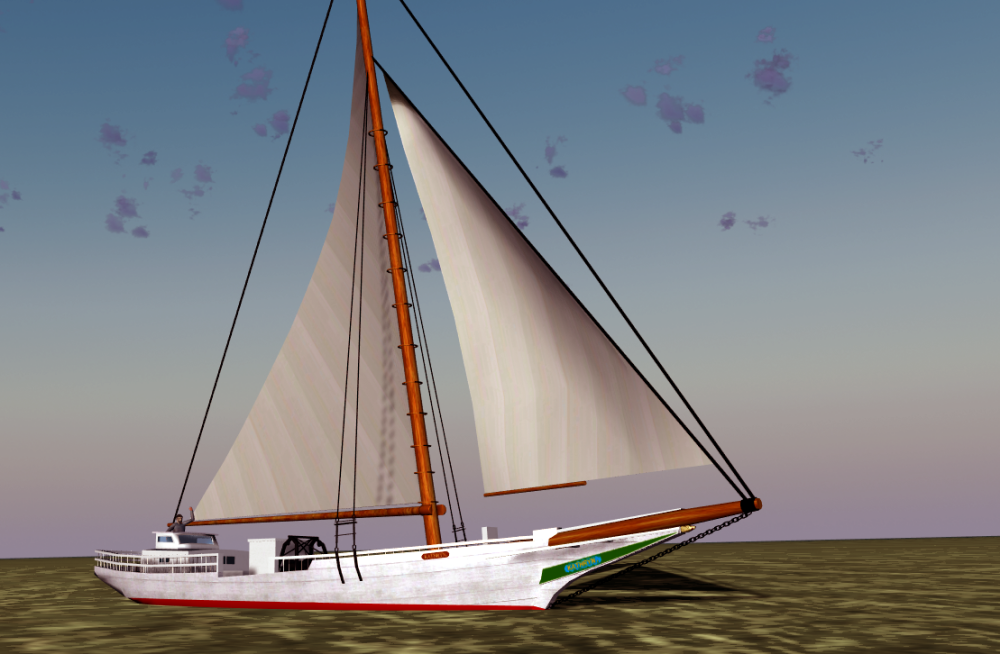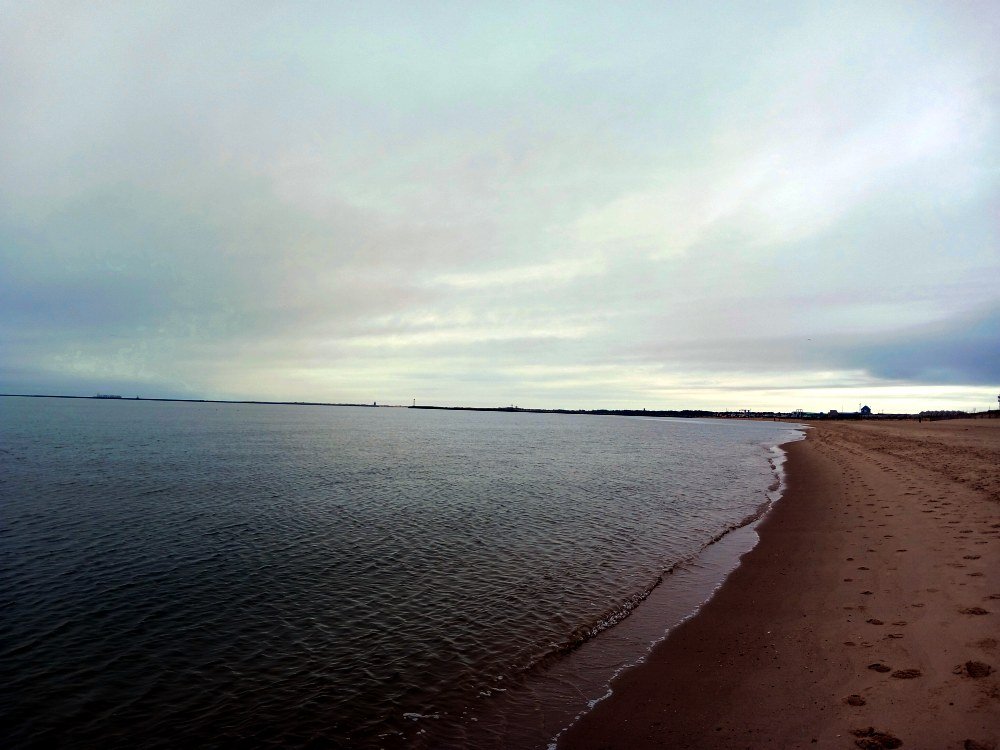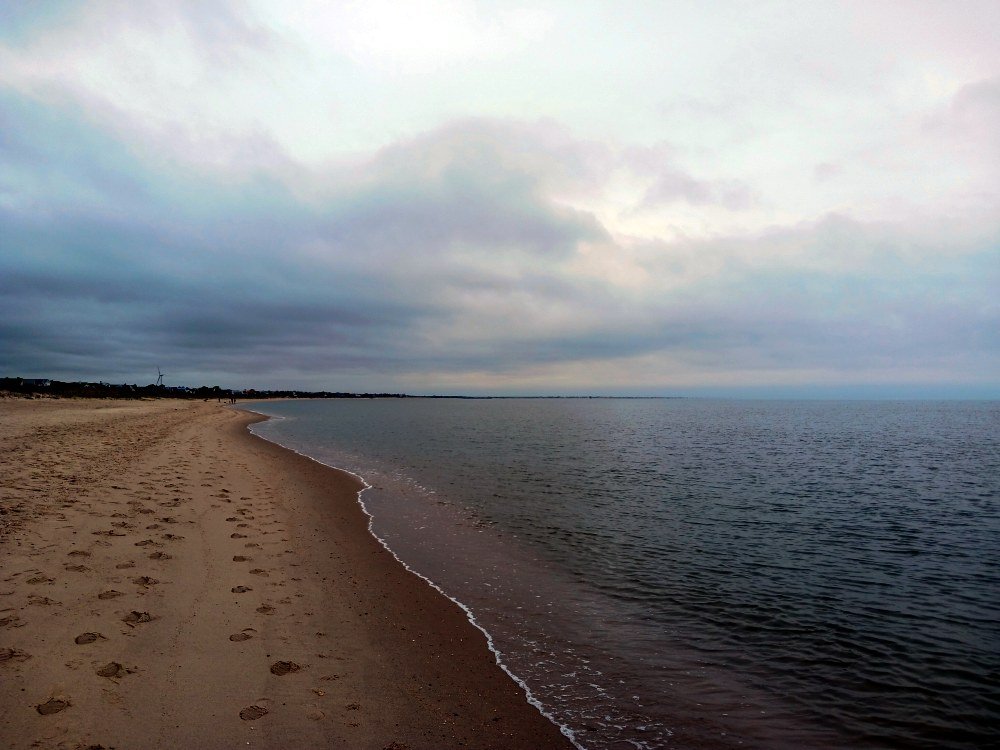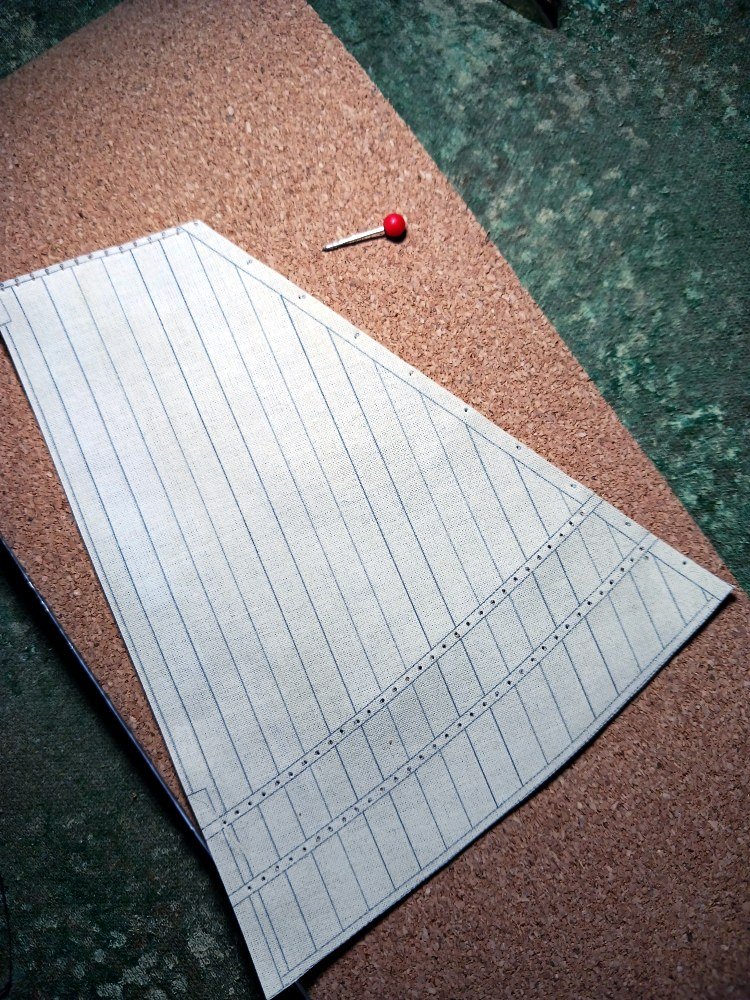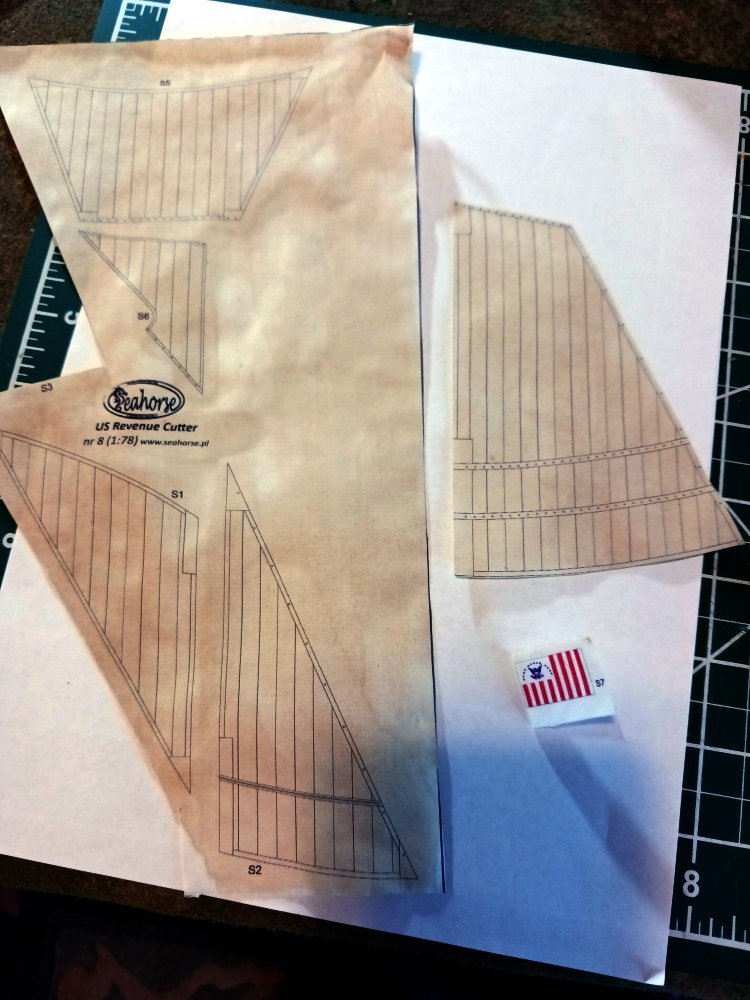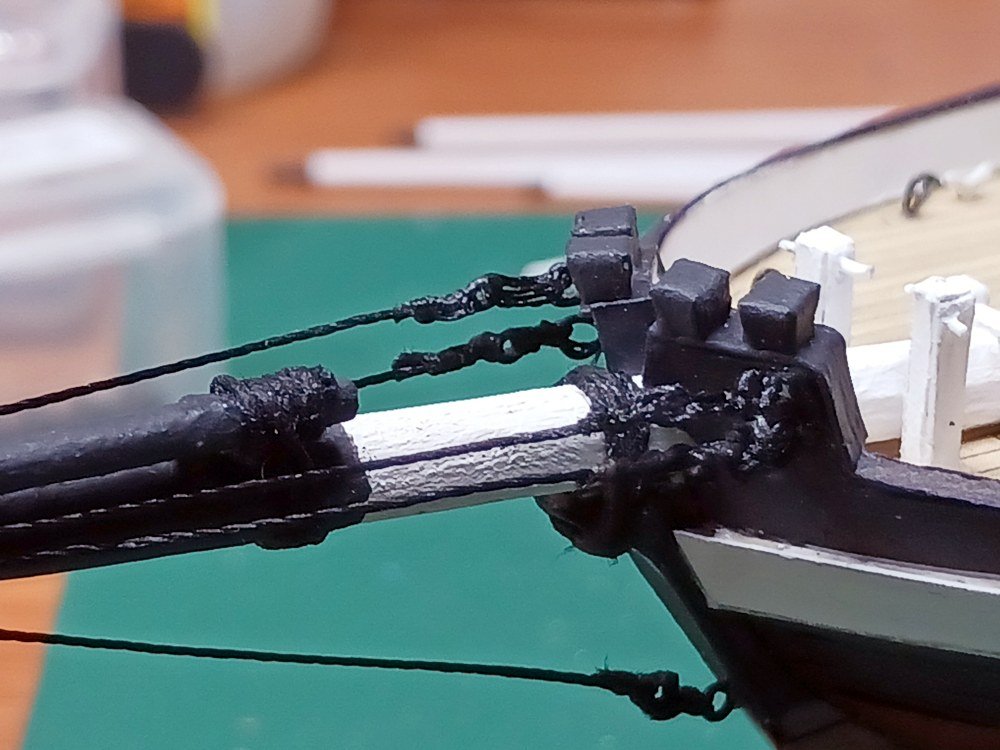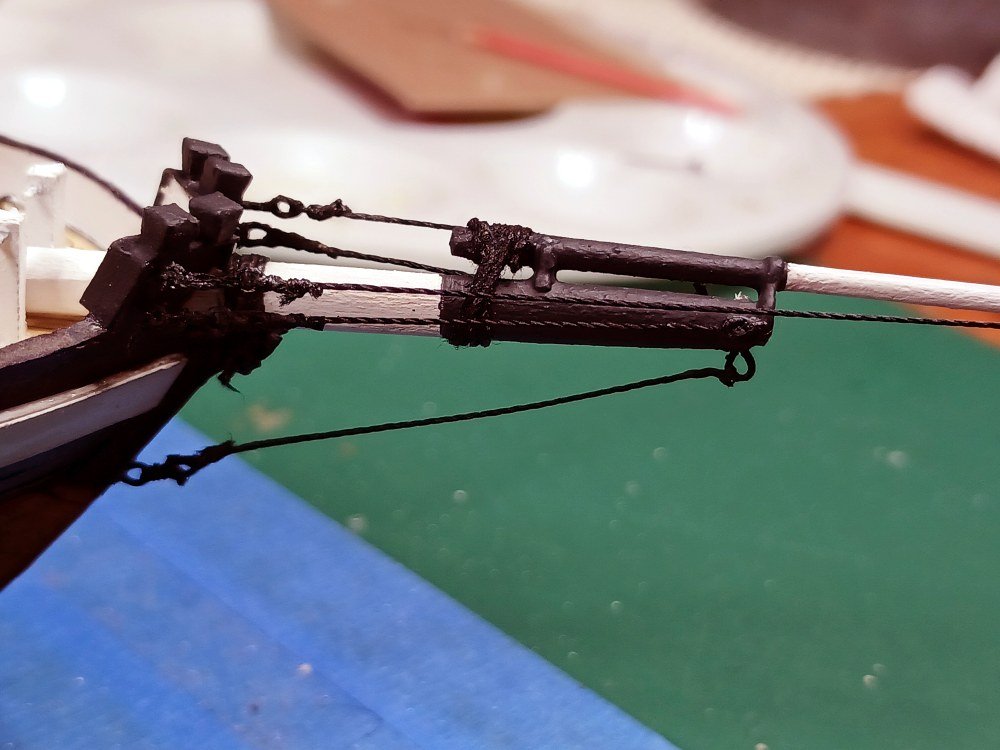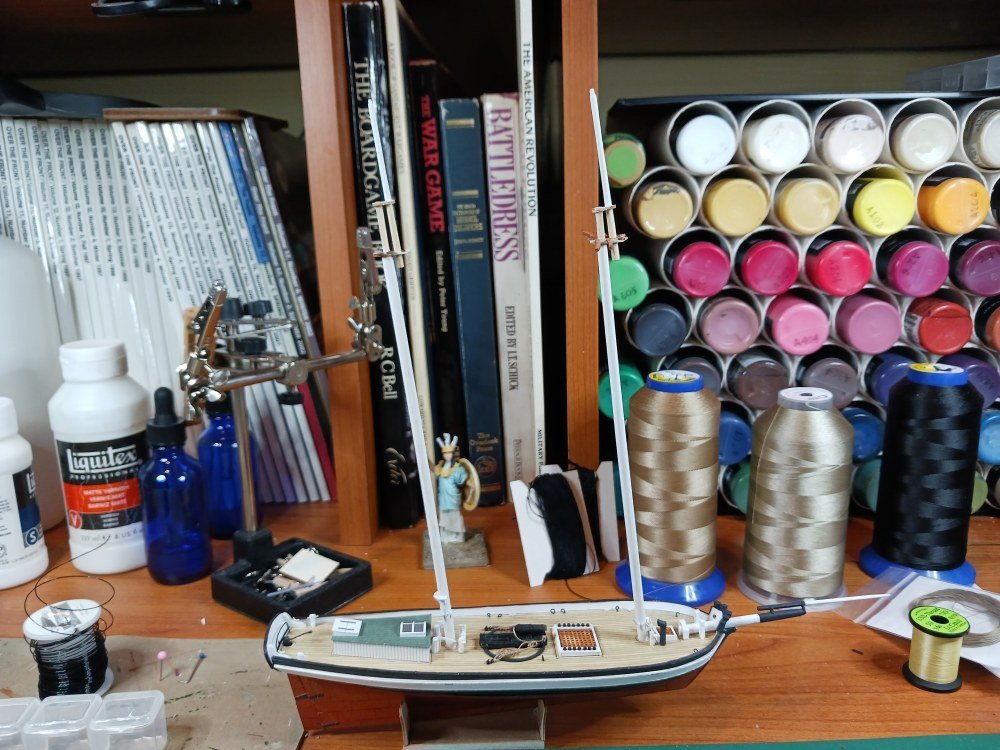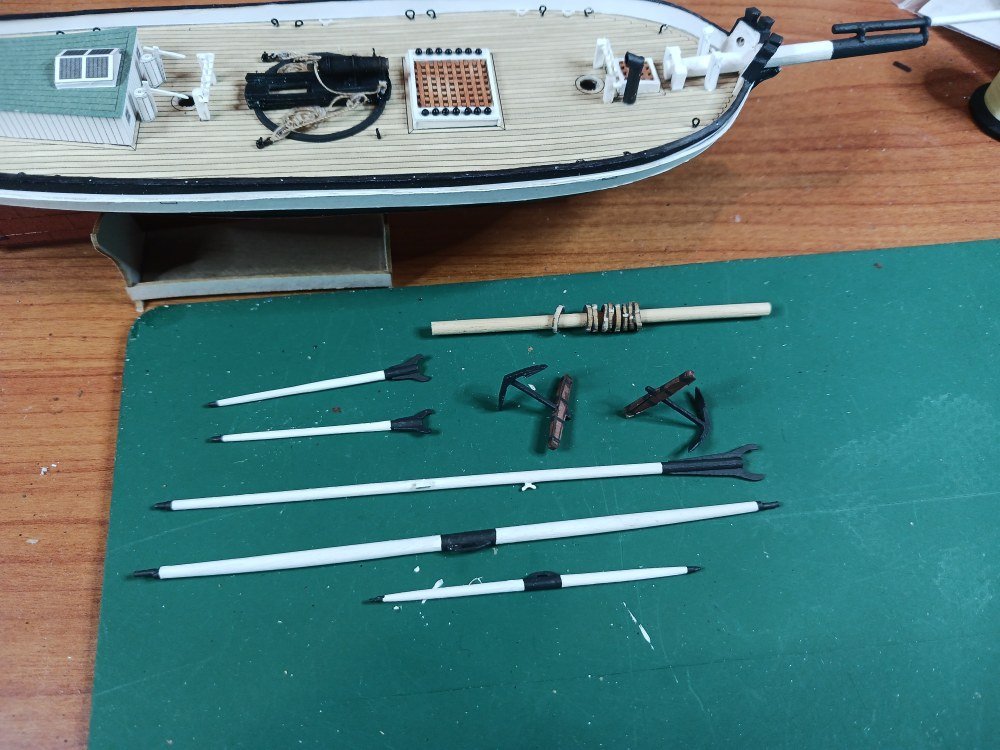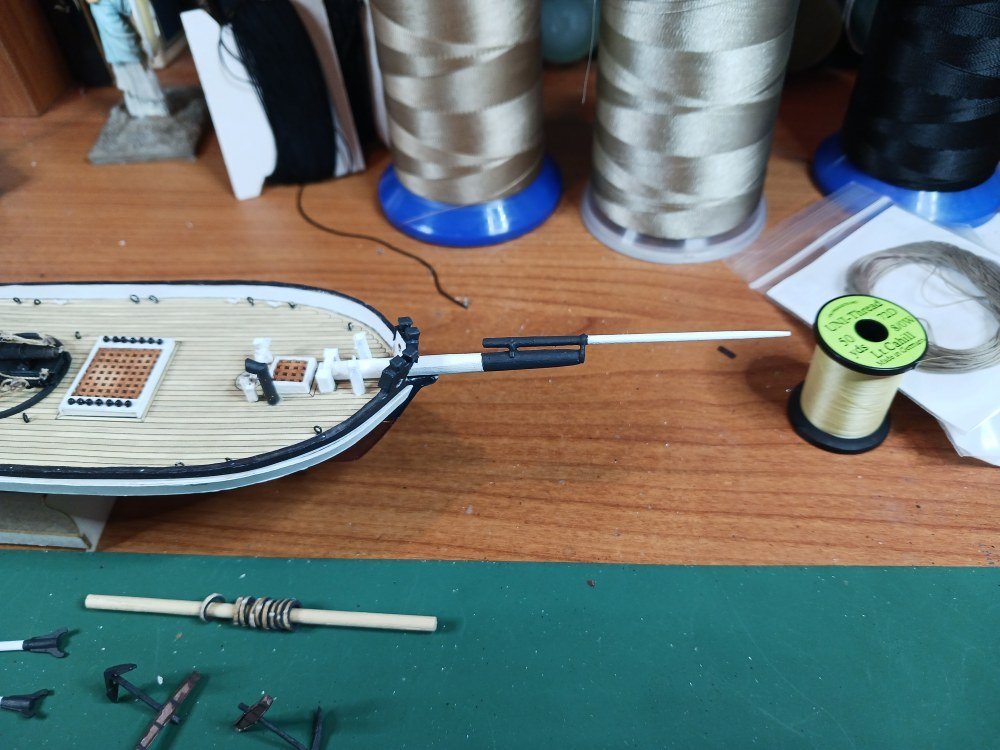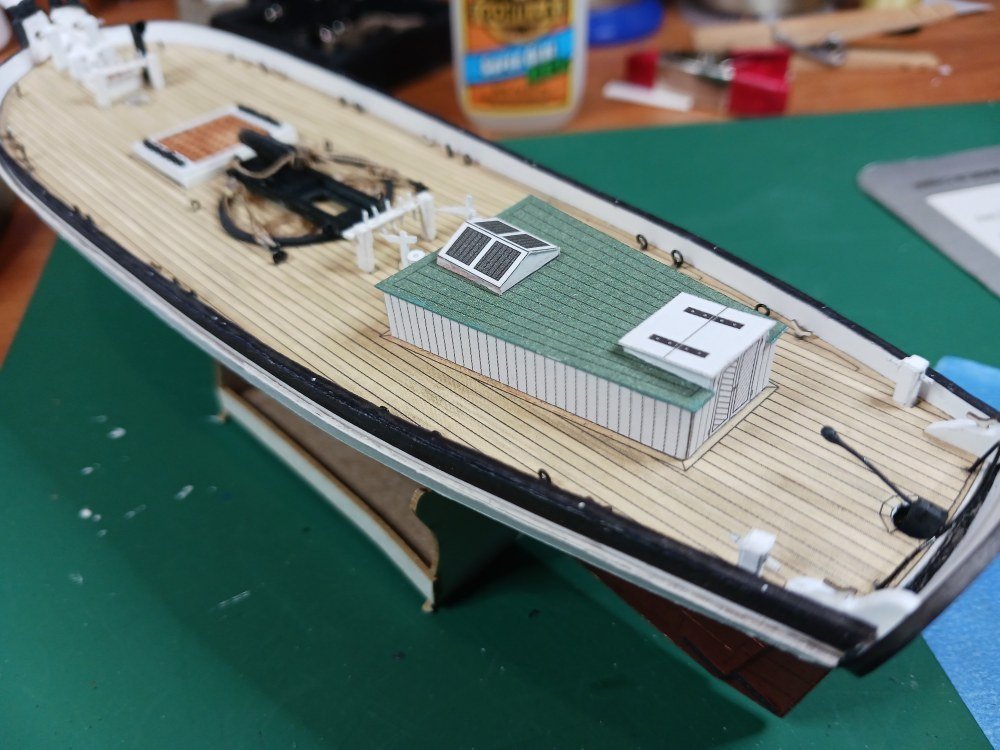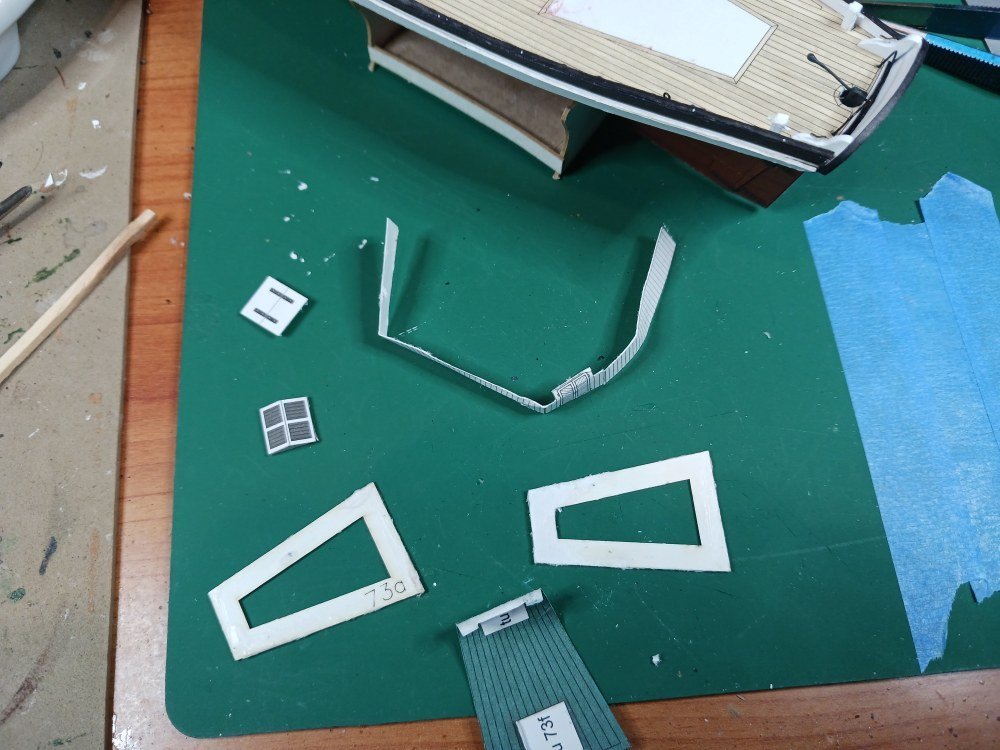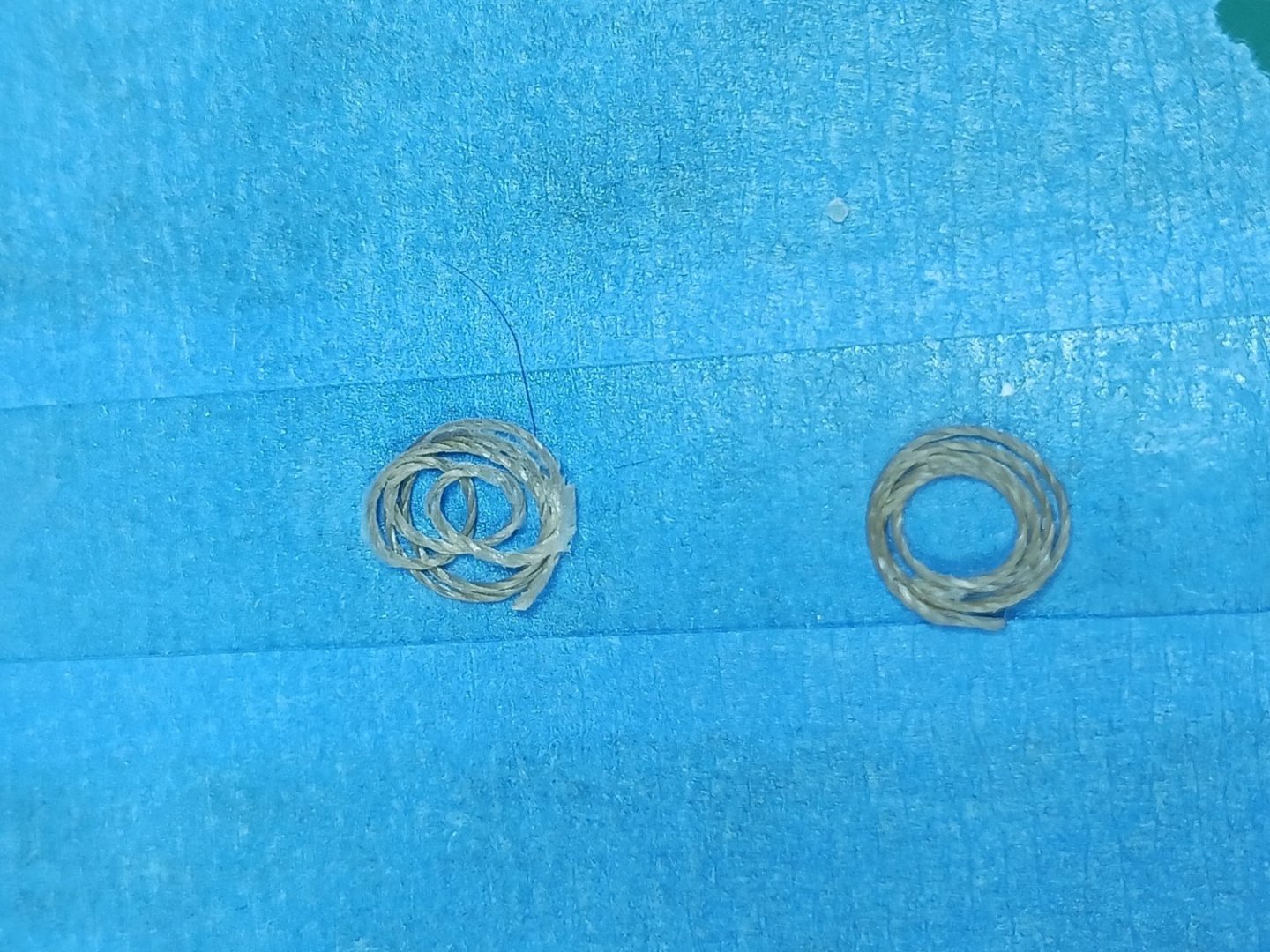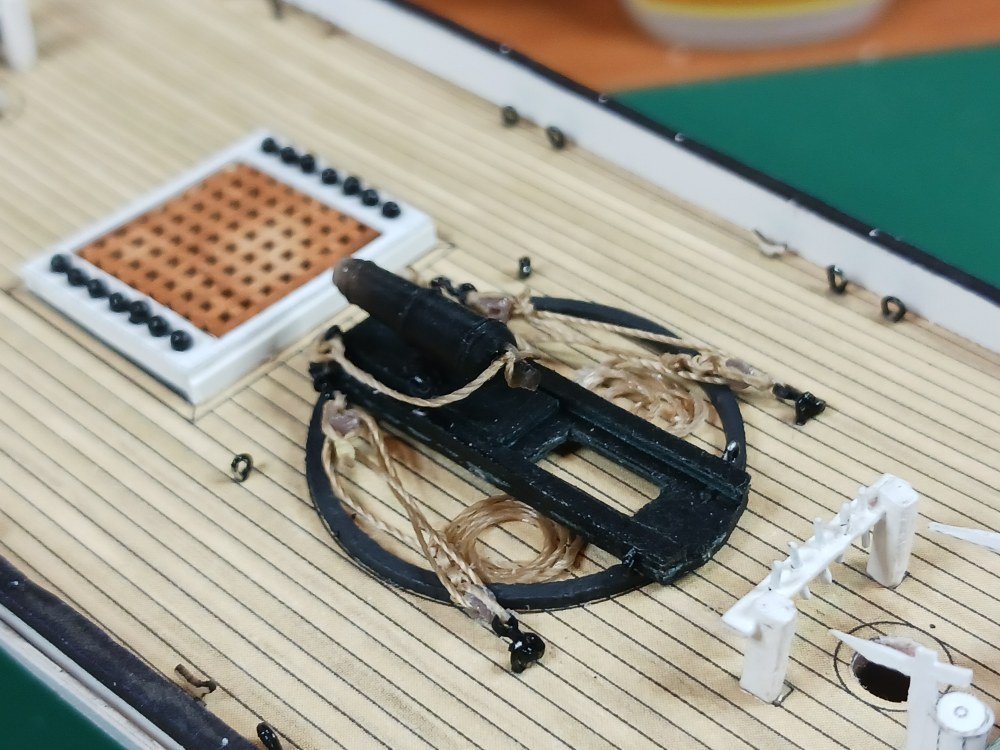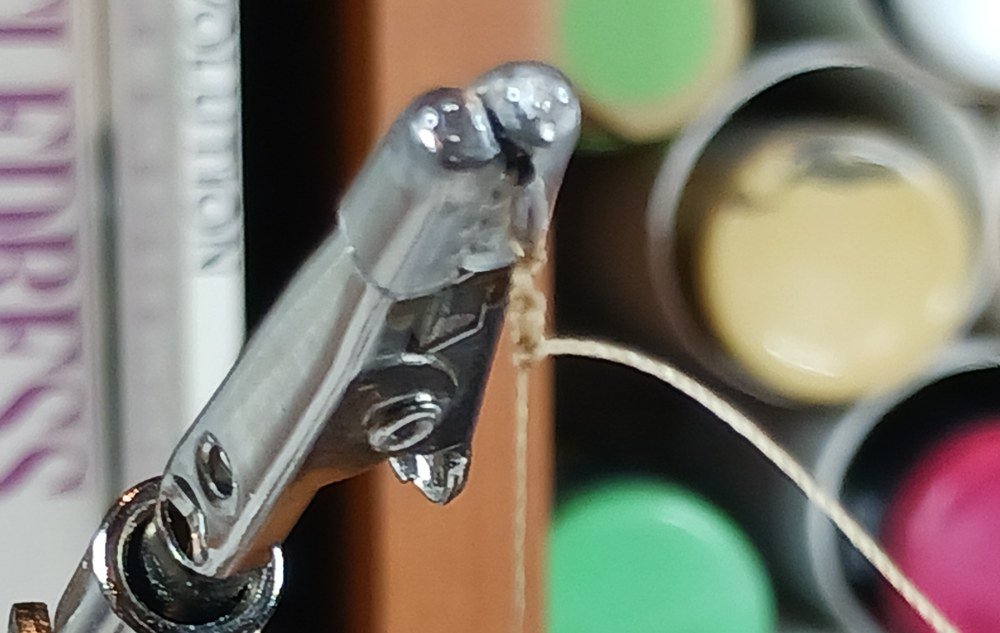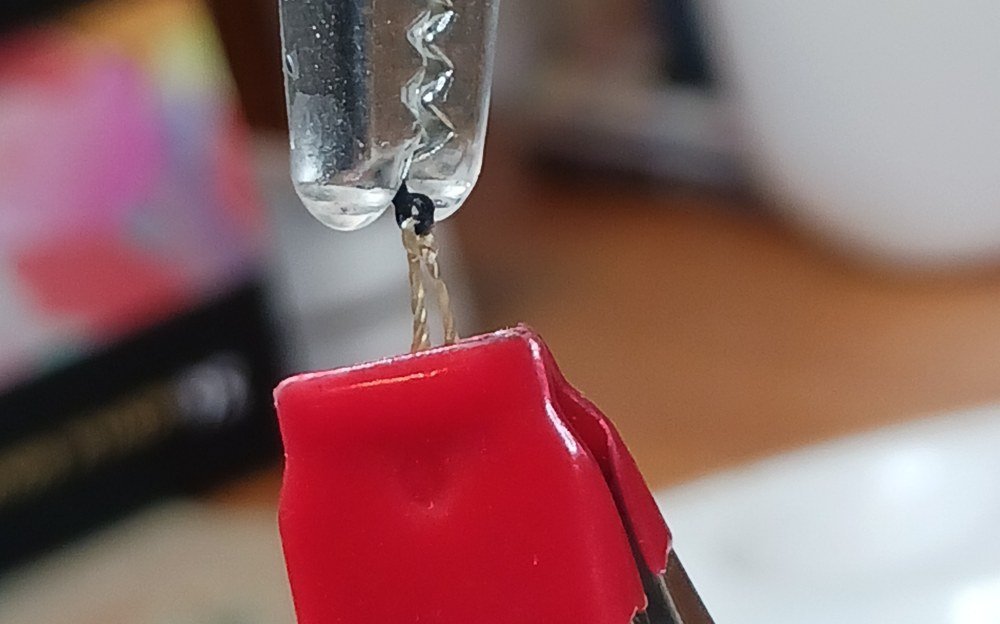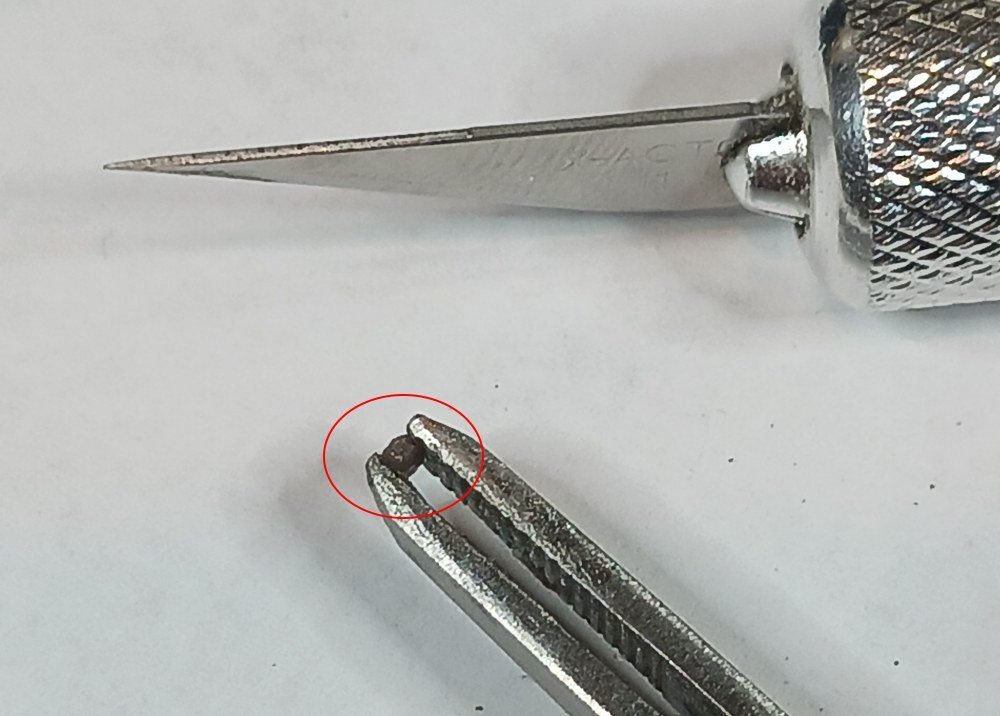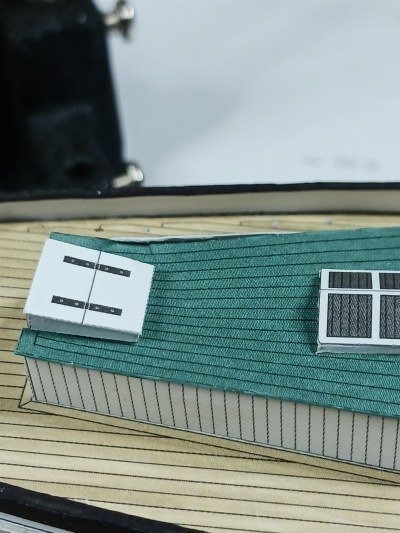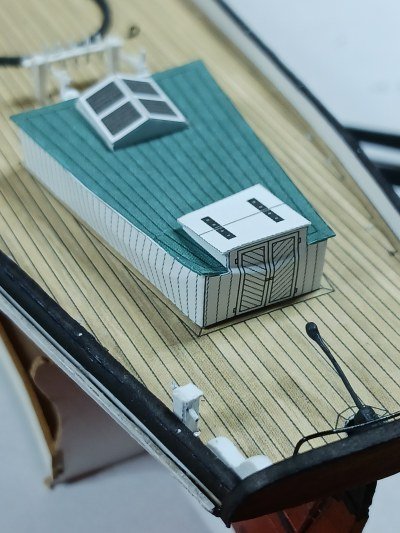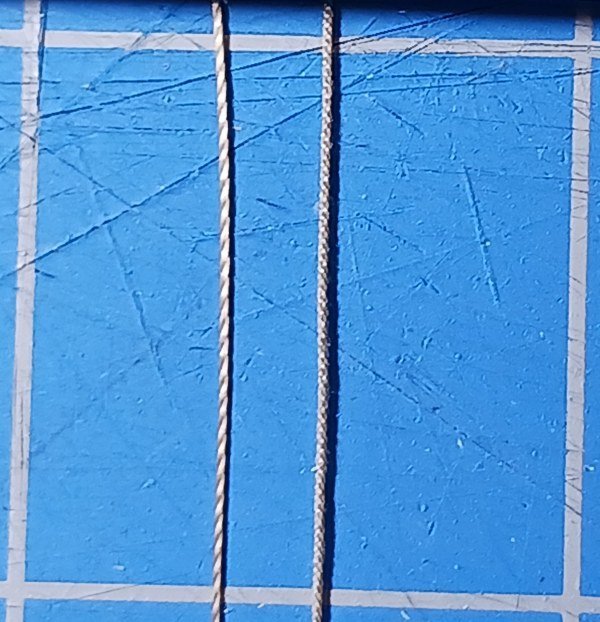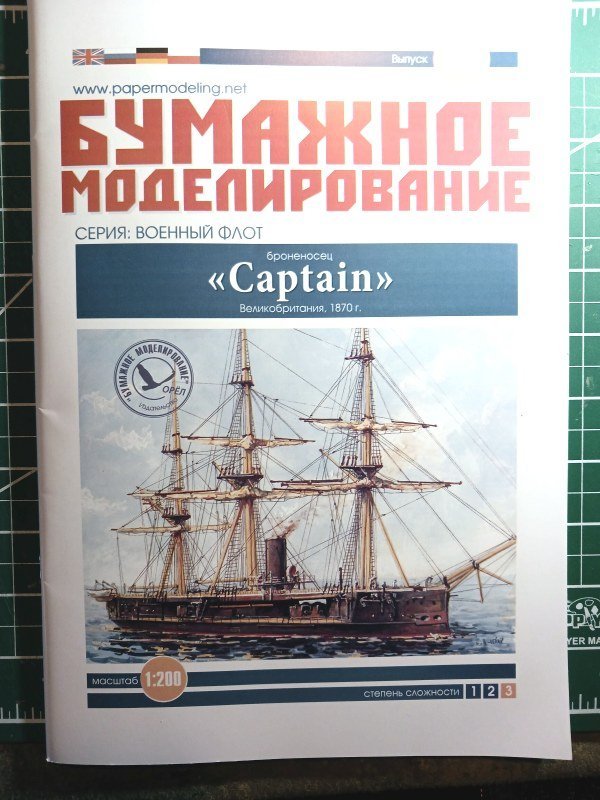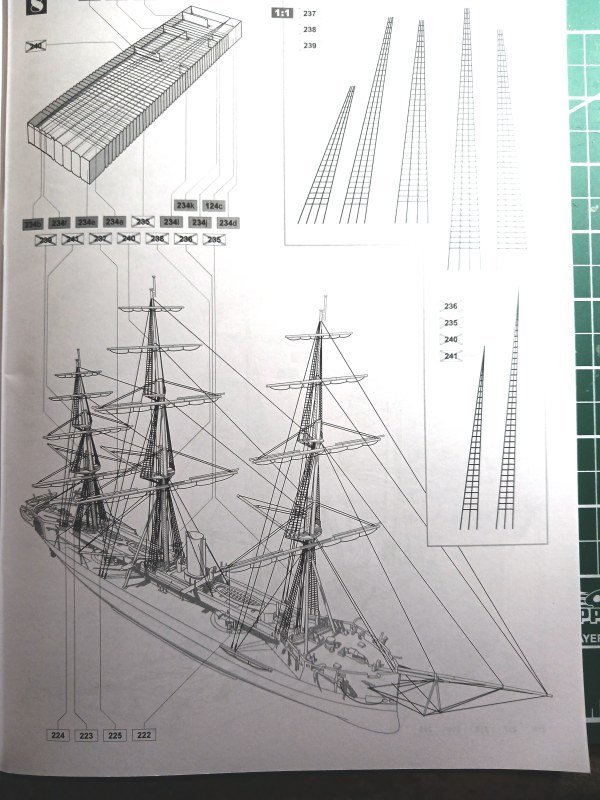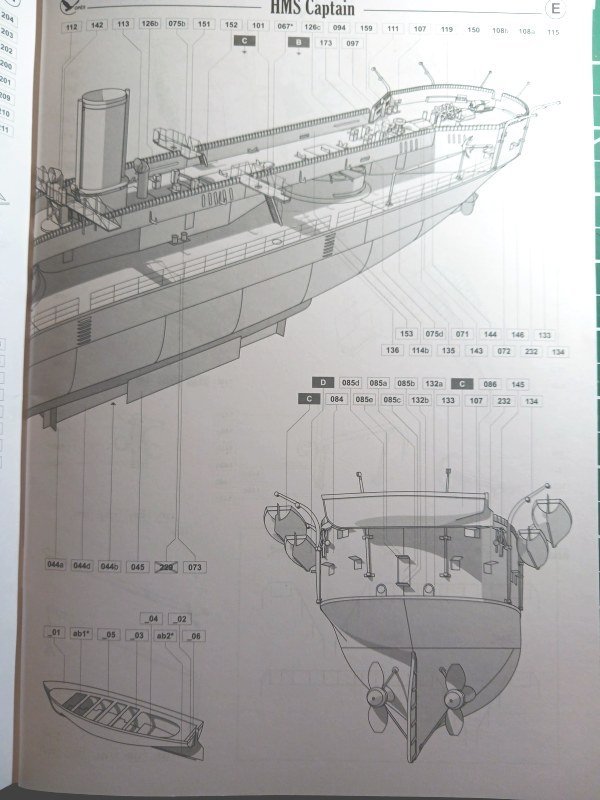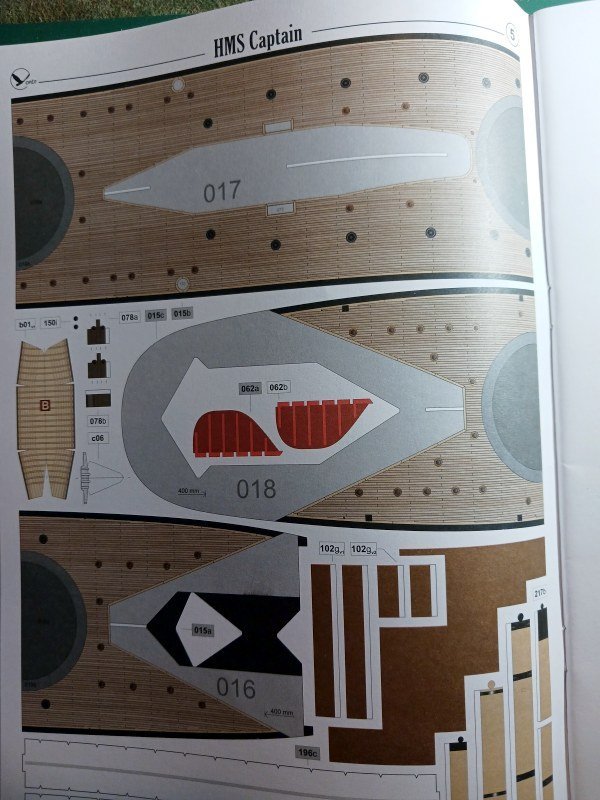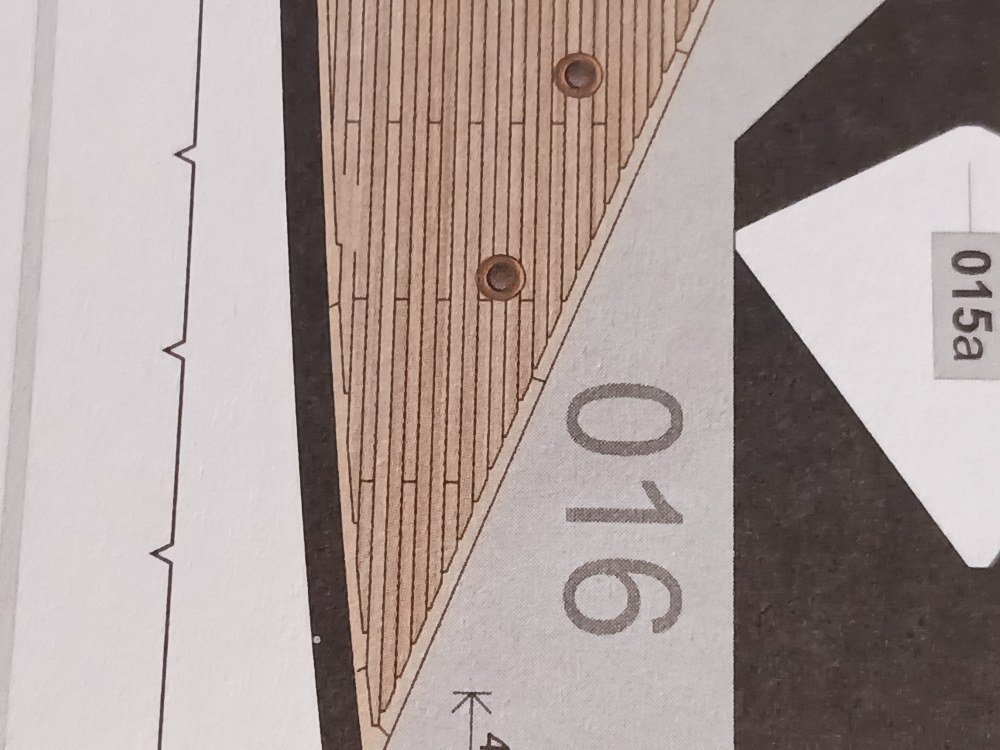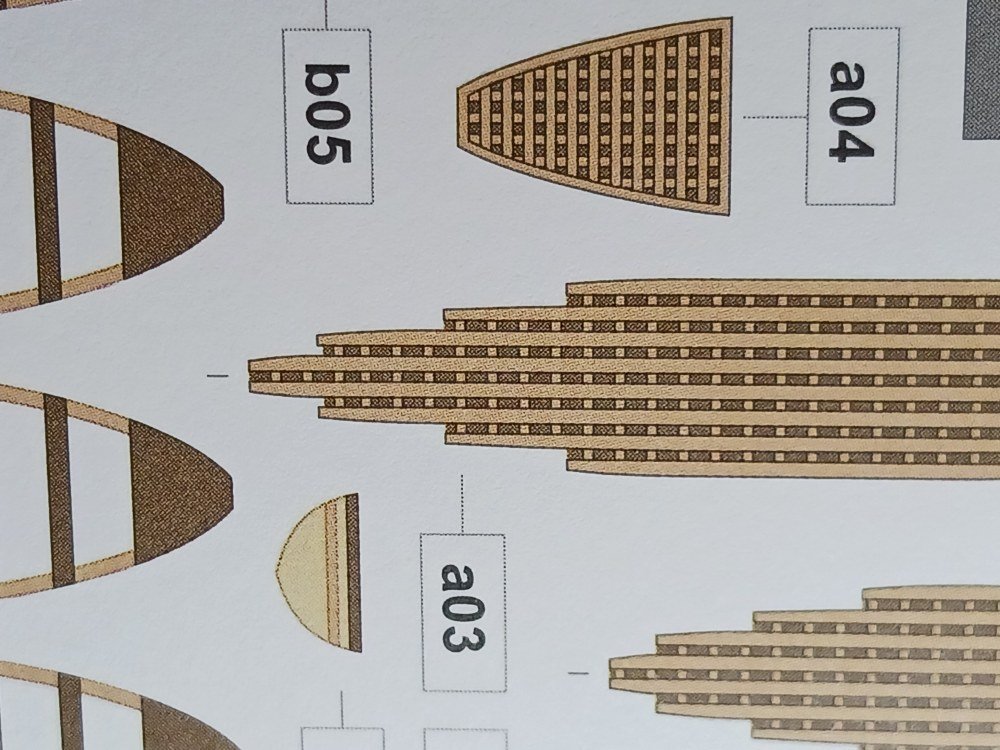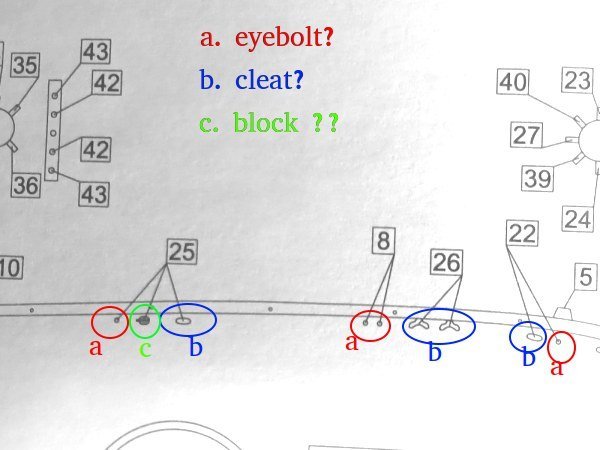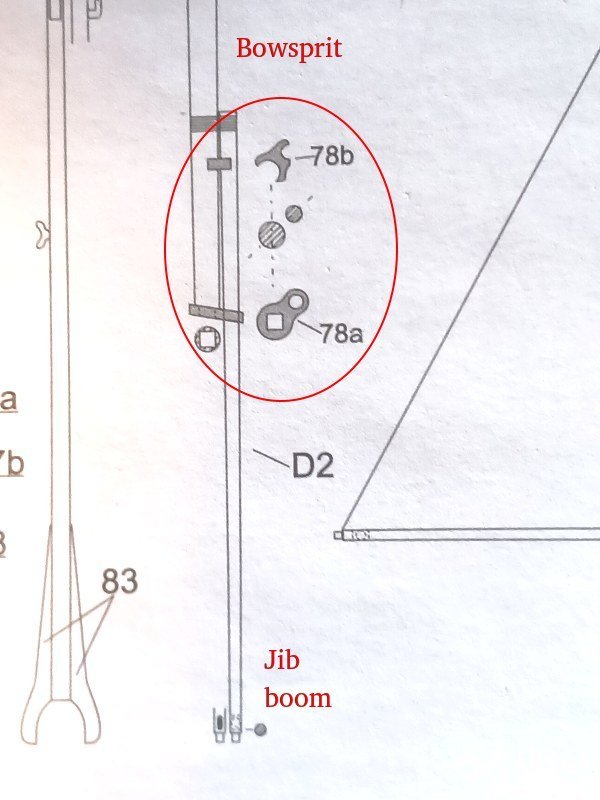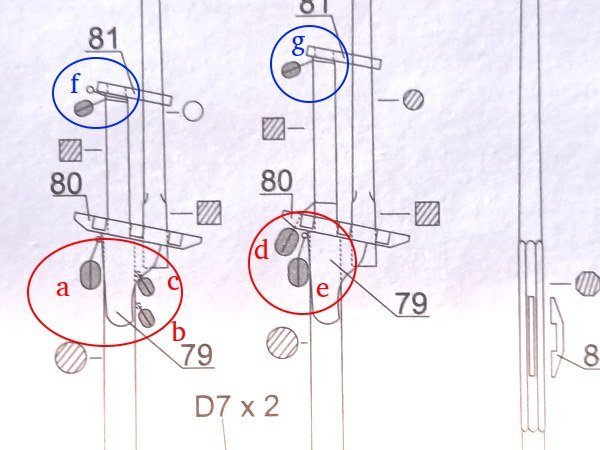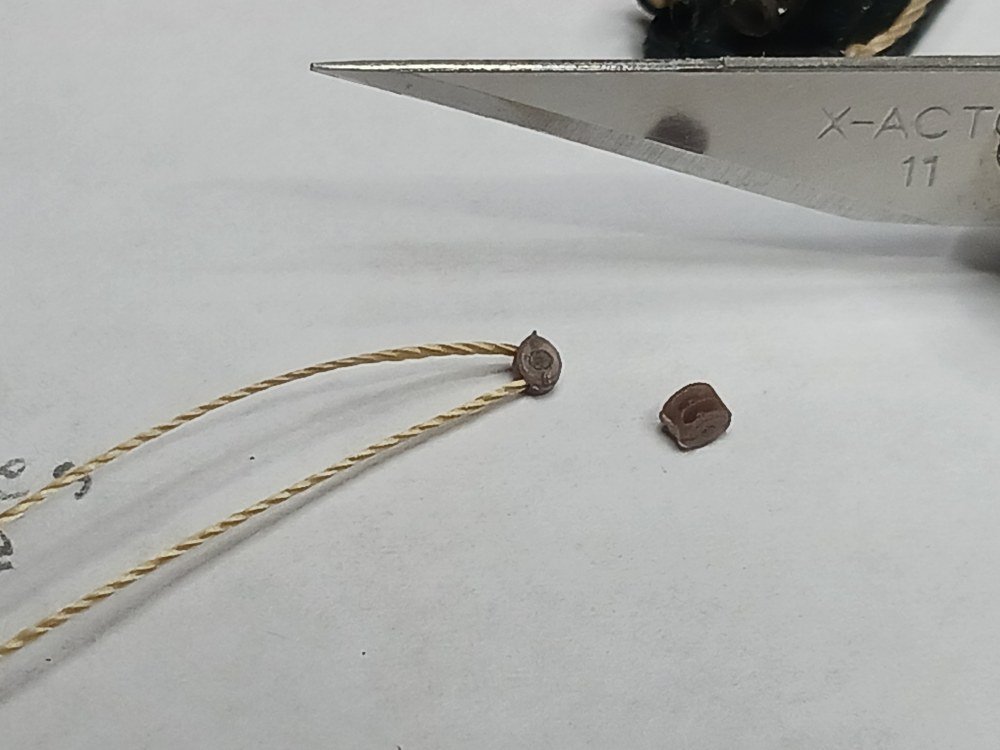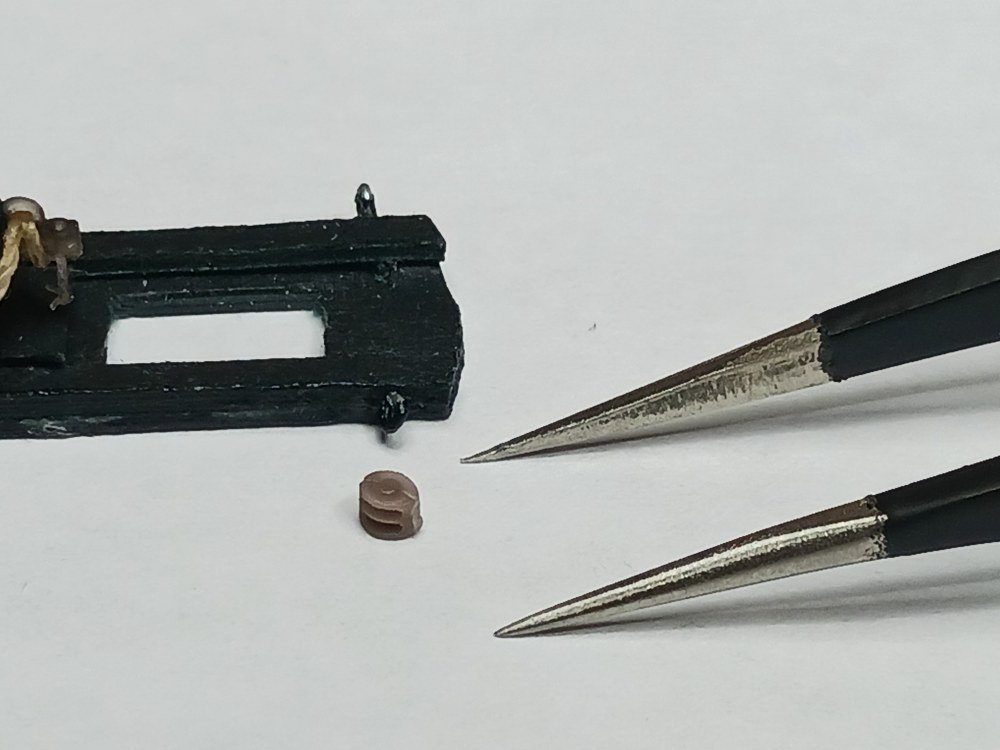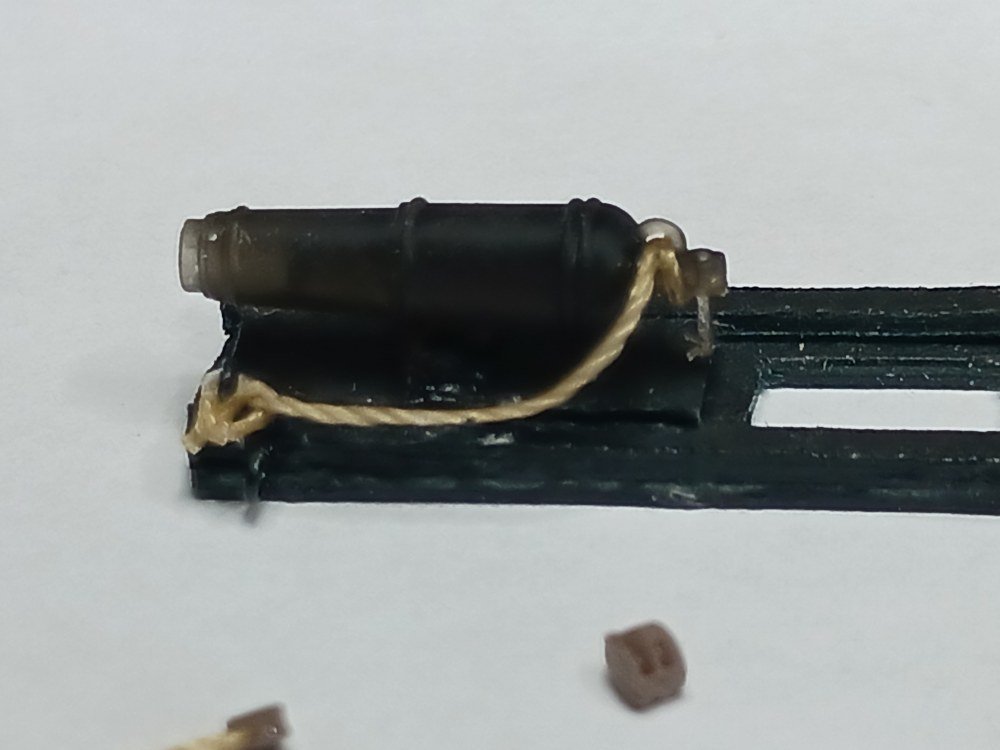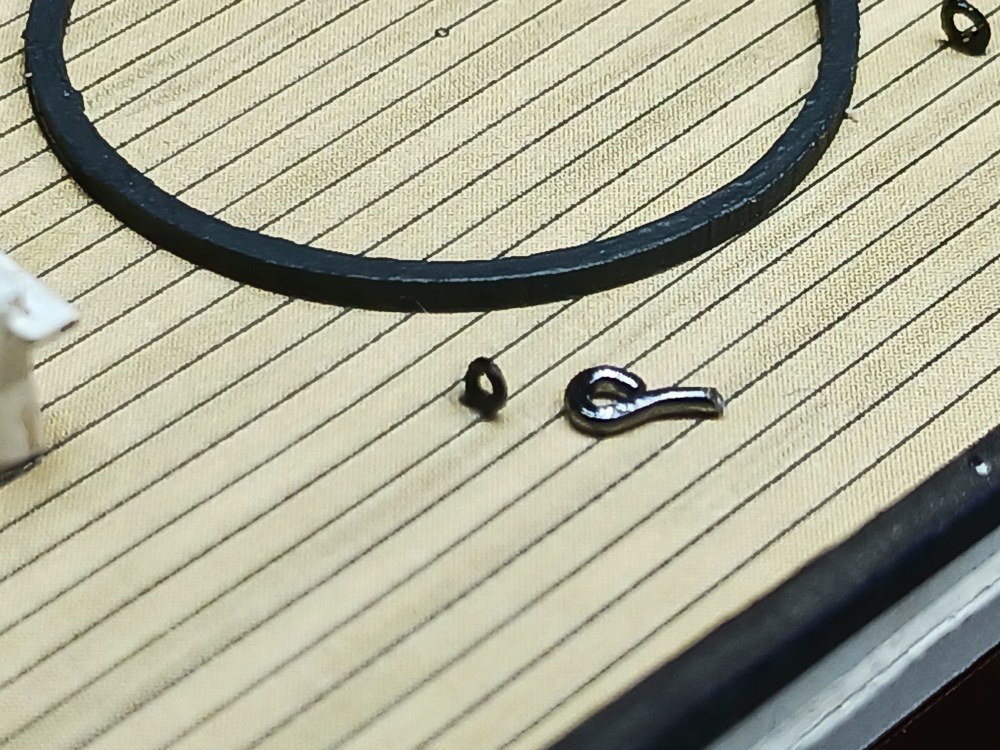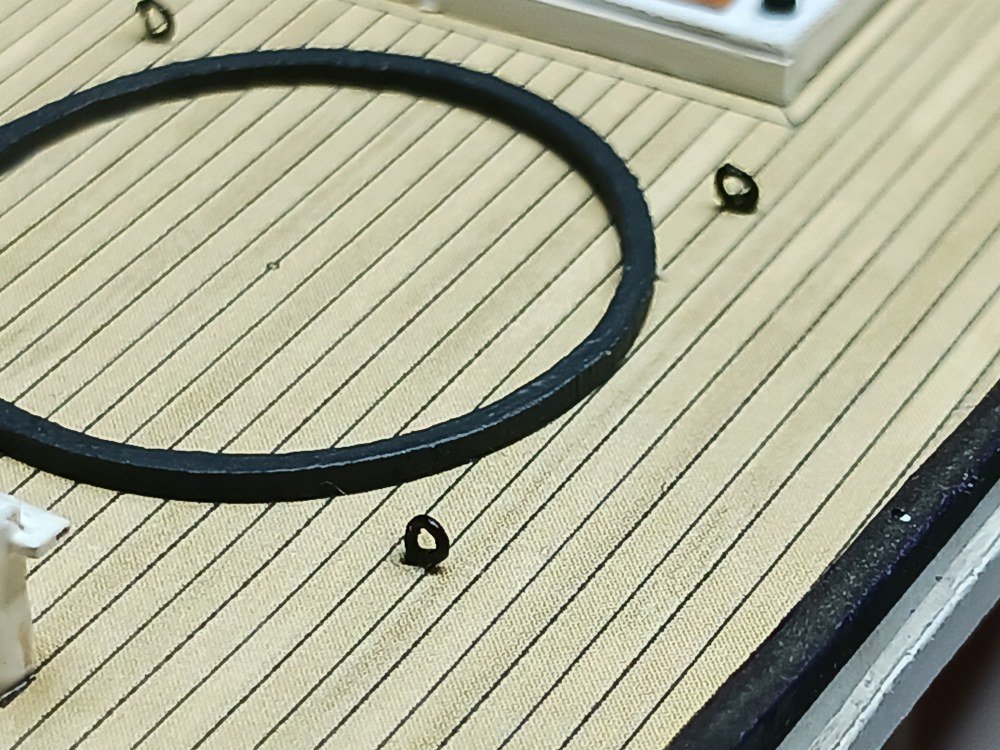-
Posts
90 -
Joined
-
Last visited
Content Type
Profiles
Forums
Gallery
Events
Everything posted by Jsk
-
Permission to come aboard? I recently found that Heinkel models are available on Wargame Vault. I usually have a credit there for rules I sell and I've been wondering what I can do to bring down the balance. Problem solved! I've added the USS Baltimore to my stash but I've been seriously thinking about the Turtle as a 'between other projects' project. I'm looking forward to watching your experience with the Nautilus. P.S., Who's Ron Miller?
- 7 replies
-
- Nautilus
- Heinkel Models
-
(and 1 more)
Tagged with:
-
Thanks, Bob. I suspect there is no term in the entire maritime lexicon that has a single, simple meaning. I think I'll forego actually pointing the reef points since I'm working at 1/72 scale. Thank you for this^^ I was confused about this because most of what I've seen on-line do indeed misuse the term. --jeff
-
Perfect. Thank you!
-
Was there any sort of standard length for reef lines? Frankly, I don't have a good feel for how long they should be. I understand that the lines further up the sail would be longer than those lower down because they needed to encompass a greater amount of reefed sail. But having never reefed a sail I really don't know how long the lines should be. If all else fails I'll just go with what looks right according to other models I've seen. TIA --jeff
-
@ccoyle, I have noticed a distinct lack of cliffs in Delaware. I might have to search the coastal areas a little more closely. 😉
- 34 replies
-
- card
- Revenue Cutter
-
(and 1 more)
Tagged with:
-
After working on the boom and gaffs I worked on the sails. I used a watered down acrylic paint (about 50/50) of a 'sandstone' color to color the white fabric. I hung the fabric like so much laundry on a line and let it dry for a good 24 hours. The fabric had a nice stiffness to it after the paint treatment. Since the sails are printed on one side only I used a thin lead mechanical pencil to draw the seams on the reverse side and then applied a thinned coat of watered down white glue to seal them. (I've happily used Aleene's Tacky glue for the entire project.) I simply used an knife to cut the sails apart and glued thin strips of the same painted fabric for the tablings and reefing bands. I've not yet glued on the bolt ropes but decided to try the reefing points first. So... were there standard lengths for the reef lines? And what's the best way to tame them? The painted fabric: I used a pin and some cork backing to open the reefing points: Went away to Lewes, Delaware, for the weekend searching for some inspiration. Found some looking north: Found some more looking south: Returned home and added unruly reef lines to the fore sail:
- 34 replies
-
- card
- Revenue Cutter
-
(and 1 more)
Tagged with:
-
Thanks, Tomek. So the trucks are for the parrels. That makes life easier! I don't have any wire to strip the insulation from so I was going to cut sections from a CA glue applicator tip. I think I could make it work but now I know I don't have to.
- 34 replies
-
- card
- Revenue Cutter
-
(and 1 more)
Tagged with:
-
Thanks all. I've definitely been working slowly here. Feeling my way, so to speak. I do have the bow sprit mostly rigged. I wish it was a bit neater but I suppose that will come with experience. I struggled a lot with the thimbles and finally gave up on them. I think if I simply tied the lines to the thimbles rather than try and seize the line around them I'd have been more successful. Looking at @modeller_masa and @0Seahorse builds I see that's how they did it. What I ended up doing was to create a loop around a brass wire and seize the line as if the wire was a deadeye. Then I slid the line off the wire and coated the loop with CA to harden it so I essentially had a line attached to a thimble. It worked, mostly. I've started working on the parrels for the gaffs and boom but I have a question here. The instructions show short lengths of wire insulation to use for the parrels. But I notice the 3d printed parts include 'trucks'. According to my glossary, a truck is the cap at the top of a mast. That doesn't make sense for these spherical beads. Are these actually to be use for the parrels? I don't know what else they would be used for. I certainly want to place the gaffs and booms (and hoops) before attaching the topmasts. I haven't decided if I want to try bending the fore and aft sails to the masts after rigging or construct the masts with sails before and then rigging around them. I think it might be easier to do the standing rigging around the sails rather than try attaching the sails after the standing rigging is in place. Hmmmm....
- 34 replies
-
- card
- Revenue Cutter
-
(and 1 more)
Tagged with:
-
Iteration is one of the benefits of virtual modeling! Very interesting project.
-
I'm late to the party (as normal) but I don't think you need to be concerned that Sketchup doesn't do curves. I don't believe *.stl format does either and any model intended to be 3d printed need to be triangulated when exported to a format the printer will accept. I think the resolution of the printer determines how small (and hence how smooth) the triangles can be. I could be very wrong on this as I have intentionally avoided getting a 3d printer. (I simply don't need another hobby!) But that box of blocks is very tempting! If you're looking for other modeling software you might give Wings3d a look. The learning curve is much less than something like Blender and it would probably speed up you modeling pipeline quite a bit. I've modified *.stl files in Wings and had them printed so I know it's capable of producing printable files.
-
I think I've met my match. Now that I've collected the rigging supplies I decided to start with the bow sprit. From what I can tell it looks like the bob stay and guys are seized to thimbles. The thimbles provided in the kit are 2mm, outside diameter and seem to be beyond my hand/eye coordination. So what are my options? I notice @Dr PR used blocks (here). I think I'd be able to manage that (since the blocks I have are bigger than the thimbles) but his ship is a bigger vessel (and scale!) than I'm working on. Would a 31 tonne cutter be rigged that way? I know that period rigging could vary a lot depending on the captain's preferences but I don't want to veer too far from normal. But I'm also facing the conundrum of desiring details that are probably beyond my abilities. Hmmm. 😡
- 34 replies
-
- card
- Revenue Cutter
-
(and 1 more)
Tagged with:
-
Thanks for the likes and checking in, everyone. OK, ignoring the two steps back of the crushed cabin I proceeded with the pivot gun. Thanks to @modeller_masa's tip above I was able to strop and reeve the blocks for the pivot gun. Actually, using masking tape to hold things in place was key to being able to do it. So simple but it totally escaped me! Thank you! I did decide to go with only two lines, though, and rather than have the falls coiled on deck I decided to place them out of the way inside the pivot ring. With the pivot gun finished I just couldn't let the dented cabin remain. Part of this was to see if I could fix the issue--This is a learning project after all (Aren't they all?). I was able to deconstruct the cabin by using isopropyl alcohol applied with a cotton swab. Once the glue had softened I was able to gently separate the cabin from the deck and then the roof from the cabin walls to get to the internal 1mm thick structural pieces. It takes patience to let the alcohol work its magic but it is possible. I did, however, break down and use of the duplicate wall and roof from the extra copy of the model that came when I purchased it. Looks like new. With that finished it was time to move on to the bow sprit and jib boom. I hadn't sized these pieces correctly. They remain more robust than the plans call for but I was afraid that taking them down to the specified diameter would make them too fragile for my clumsy, inexperienced hands. I fudged it. No one will know but me. (And everyone who reads this!) I then finished the various spars by adding cleats, etc., and painting. While I have assembled the mast tops I've not yet glued them in place and the masts themselves are only dry-fitted to the hull. I need to decide how I'm going to handle the main sail hoops before permanently attaching the top masts. A couple weeks ago I had ordered an extra set of blocks and dead eyes from @0Seahorse as well as some rigging material. They took a bit longer than normal to arrive but arrive they did. Today. Between ordering and arrival, though, I spent a fair amount of time reading up on rigging here on the forum and looking for suitable material. Oh, the wonderful world of (non)standardized thread sizes! It seems that in the modeling world thread (and miniature rope) is usually identified by diameter--a totally practical way of indicating size. But outside the modeling world (for example in the fly-tying world) there seem to be two systems commonly used. The first is the 'ought' system where the thickness of thread is indicated by the number of 'oughts' or zeroes. But the standard 'ought' seems to differ among manufactures. What is consistent is that the greater the number of 'oughts', the thinner the thread. I chose to get a spool of 8/0 (eight oughts) fly tying thread to use as seizing material. It is almost microscopically thin. The second 'real-world' system of thread 'standards' is the 'denier' system. IIRC, the 'denier' score of a thread is the weight of 9000 yards of the thread. I noticed that the spool of thread that I had on hand (which was somewhat too thick to use for the pivot gun rigging) was 210D... (the label was damaged). So I figured if I could acquire a spool of say, 120 denier thread then it should be approximately half as thick. This turned out to be true when I received a spool of 120D embroidery thread. And I just noticed that the 8/0 thread is also marked 72D on the spool. Some manufacturers indicate both systems, some only one. So I now have three different threads to compare. The first is the Syren miniature rope. Very nice stuff. I have four spools of polyester thread, two in tan (210D and 120D), one black (210D) and the fly tying thread (72D). I'll probably use these for most of this project. And finally I have the Seahorse rigging thread in 0.3 and 1.0 millimeter. This appears to be cotton thread and while perfectly fine, it does exhibit a bit of fuzziness which is reduced to almost nil with a little waxing. (I keep a tube of Bert's Bees lip balm on the desk for just that purpose!) I'll probably use it for the heavier lines of the standing rigging as well as the anchor cable. So that's how things stand for now.
- 34 replies
-
- card
- Revenue Cutter
-
(and 1 more)
Tagged with:
-
Wow, the Mendota photo is great at high resolution. Details that strike me is that the gun carriage appears unpainted, natural wood and how bright the metal work is. I also notice that the inside of the vent appears unpainted. (Only model builders and war gamers notice these types of things!)
- 524 replies
-
- sloop of war
- constellation
-
(and 3 more)
Tagged with:
-
Congratulations, MM! She looks great! I love the color of the sails. Did you dip them in tea to get that color? Regardless of the scale she's a graceful vessel. At 31 tonnes it does look a bit cramped. It's a shame the construction records are so scarce and and the number of each class built is speculative. It seems like (according to Chapelle) the two larger classes were favored and only the name 'Alert' is tenuously associated with the 31 tonne class. Still, it looks like the small cutters were useful up to the 1830s when larger builds seem to become the norm for the Revenue Service. I agree, too, that this card model is more complex than one would think.
- 16 replies
-
- Revenue Cutter
- Seahorse
-
(and 2 more)
Tagged with:
-
Speaking of paper and sails... Has anyone experimented using coffee filter paper for sails? Somewhere on the interwebs I read that silk span was originally used to filter coffee before it was adopted by model airplane enthusiasts (in the 40s?). I'm not sure that's true but being a 'build with what you have on hand guy' I like the idea. I snagged a filter from the Admiral and found that it was surprisingly strong paper. But I went no further as we only had unbleached filters and I did not then have a need to make a sail. BTW, Phil, thanks again for your wonderfully detailed posts and research. I'm about to embark on my first rigging job on the Seahorse Revenue Cutter so I've been intently studying your build log.
-

What kind of Cutting Mat choose
Jsk replied to Olaf's topic in Modeling tools and Workshop Equipment
I use several in three different sizes. The smallest is 5x7in and is convenient when I don't want to clean off the big mat to cut small pieces. I also use a hard plastic cutting board from the kitchen that the Admiral replace and was going to throw away. -
Thanks everyone for the likes and comments. They really help keep the motivation going. I needed that today. I had one goal this weekend: rig the pivot gun. Ugh! The week started out well. I ordered an extra set of blocks and various standing rigging line from Seahorse and some hooks and 0.3mm rope from Syren for the running rigging. The masts and spars were mostly shaped over the weekday evenings so they're about ready. Syren's stuff arrived within two days and I really like it. Comparing the good rope to what I had on hand was instructive. Looks like what I have is slightly smaller than the 0.3mm stuff. Syren on the right. My generic stuff on the left. Since I knew the tiny size of the holes in the blocks was going to be an issue (and since I'm loath to use the good stuff on my very first kit build) I decided to use the generic stuff for the pivot gun rigging--at least as a learning exercise. The real challenge is the size of the blocks. These 2mm things are tiny, tiny, tiny. Tying the line to the Syren hooks was not a problem. But stropping the block? Let's just say it's taken me two days to reeve two lines through a total of four blocks. While the plan calls for four lines for the pivot gun I think I'll follow @Dr PR's lead and stop at two. I may need to experiment with the paper blocks to see if they might be easier to work with. But the worst part of the day was when I picked up the hull in order to drill holes in the deck for the eyebolts I've been making. I noticed that the cabin has been crushed! How that happened I have no idea. It had to be me when I was dry-fitting the masts. We have no pets, no kids, no visitors and the Admiral rarely visits my lair. Time to walk it off. Maybe a way to fix the new issue will come to me in the sunshine. Where did I leave the schnapps?
- 34 replies
-
- card
- Revenue Cutter
-
(and 1 more)
Tagged with:
-
Well, the vendor (Plastic Model Company, not Paper Model Company as I typed in the OP) came through. The HMS Captain kit arrived March 2nd. So not bad timing. The Captain has got to be one of the ugliest ships in history. That's part of the charm of these late Victorian, transitional ships. They always remind me of over exuberant Gothic Revival architectural styles. Still, I think the kit's a bit beyond my skill level for now. Certainly a nice addition to the stash, though.
-
Thanks @Ian_Grant. You should try it. It's almost mess free modelling! Thanks for the links @modeller_masa. I see quite a bit of variety in rigging. But, yes, it does appear that the jib boom was offset.
- 34 replies
-
- card
- Revenue Cutter
-
(and 1 more)
Tagged with:
-
I didn't have a dowel handy so I used a bottle of schnapps. Came out to 111 inches so the thread must be 11.1 inches. Who knew it was so easy to find the length! 😉
- 34 replies
-
- card
- Revenue Cutter
-
(and 1 more)
Tagged with:
-
Jerry, First off, Hi! Took me awhile to make the association but you and I used to fly together in RB3D when I went by the nom de guerre Kugelfang. There's a trip down nostalgia road! If you don't already have it Warren Ripley's 'Artillery and Ammunition of The Civil War' needs to be in your library. I see a couple copies on ABE books. On page 218 there is a photograph of Mendota's 9" on a pivot carriage. Just below that is a line drawing of what appears to be the same carriage. There's an appendix of statistics covering a lot of carriages but I don't see Navy carriages specifically identified there. Sadly, my scanner is kaput, but I could take a photo of the Mendota photo if it would be helpful. --jeff
- 524 replies
-
- sloop of war
- constellation
-
(and 3 more)
Tagged with:
-
Does anyone know the status of Orel in Ukraine? I think I saw somewhere that they were not fulfilling orders due to the current situation. However, on February 13th I impulsively ordered HMS Captain off Amazon. I thought I was buying it directly from Orel but upon digging a little deeper it looks like Paper Model Company (also in Ukraine) was the vendor. There's a long delivery window (March 5 - March 27) which is fine since I'm in no hurry. But I keep going back to the Orel site and finding more and shiny things I need. Just curious.
-
I could use some assistance from the rigging gurus. There's no key for the drawings with this kit so help in deciphering the rigging diagram would be appreciated. Also, I haven't quite mastered the terminology so please bear with me if I use incorrect names. Are my notes correct regarding these belaying points in the drawing above? I'm fairly certain 'a' represent eyebolts in the deck. I think 'b' represents cleats in the deck and on the bulwarks (for line '26'). 'C' has me puzzled. Is that a block attached to an eyebolt in the deck? Next: Are blocks a - e attached to eyebolts in the masts? Though 'd' may be seized to the mast above the top? Are 'f' and 'g' seized to the masts just below the caps? And finally, with parts 78a and 78b it looks to me that the jib boom is positioned off-center of the bowsprit. If you were looking straight at the bow and the bowsprit was a clock face, then the jib boom would be around 10pm? Thanks in advance.
- 34 replies
-
- card
- Revenue Cutter
-
(and 1 more)
Tagged with:
-
I thought I discovered a solution to eye-bolts. Fishhooks! Actually, I saw the idea in an old post by @DrPR and jumped on board. Not knowing anything about fishhooks I bought a variety pack of various sizes thinking clipping eyelets off the smallest would probably work for 1/72 scale eye-bolts. Hmmm... no. Too big. So I surprised myself and was able to make a few passable rings by wrapping 23 gauge wire around the tip of a new set of fine point tweezers. After attaching them to the pivot gun sled and the deck the next step was to start rigging the gun. Using what I had on hand didn't work so well. I don't know anything about the thread I have. I purchased a spool of black and a spool of tan (really more of a gold) for rigging 1/600 scale wargaming ships (My COVID lockdown project of 2020). While I was able to attach the breech rope I was not able to seize it decently. Two reasons for this: 1) I used CA to tack it to the eye-bolt which made folding it back almost impossible; 2) I don't have any 'small stuff' to seize with. I ended up with something of a stiff overhand knot which, to be frank, looks horrible. For now I think I'll leave it, though. Since the next step is to rig the gun tackle I wanted to see if my thread would even work. Since the Cutter model mostly uses 2 and 3mm blocks my spool of nondescript thread was clearly too thick. It took me almost an hour to tease the thread through the sheave of a single block. It was a snug fit. Even using CA or PVA to stiffen the string made the thread too thick to fit. It might work for stropping the blocks, though I haven't tried it yet. I wish I had some way to measure the diameter of what I have but I don't have anything that sensitive. Frankly, I can't even see the measurement on my little brass caliper when I try to measure the thread. The model plans call for thread in 0.2, 0.3, 0.4, 0.5 and 0.6 mm diameters for various parts of the standing rigging. I think 0.3 mm is used for the running rigging. I feel like I need to start accumulating rigging supplies (since I've been stashing 1/72 and 1/100 scale models), but I'm not sure I need that much variety. It think I might buy some 0.3 and 0.6 (and some small stuff) from 'Ropes of Scale' and use what I have for the other sizes. Meanwhile, I'm almost finished shaping the masts and spars. My next exercise is going to be stropping. Wish me luck! Better yet, any suggestions for a far sighted, one-eyed model shipbuilder struggling with his first rigging job? Tools? Techniques? I wish I'd used some foresight and ordered an extra set of blocks (or two) for this kit. Goodness knows, I expect to lose half of 'em to the floor gods! Perhaps another order to Seahorse is in the not too distant future. @0Seahorse, thanks for checking in with my build log, Tomeck! And thanks for the tip about fairing the framework. I considered it but wasn't sure if it was standard practice for card models. I got conflicting information off the web. Sometimes my motto is 'When it doubt, take the lazy way out!' But it makes sense and fits what I was experiencing with the build. I'll know for the next one. One thing I am learning from this build is that card models can be very precise and if your work isn't as precise as the design... well, you're in for a challenge!
- 34 replies
-
- card
- Revenue Cutter
-
(and 1 more)
Tagged with:
About us
Modelshipworld - Advancing Ship Modeling through Research
SSL Secured
Your security is important for us so this Website is SSL-Secured
NRG Mailing Address
Nautical Research Guild
237 South Lincoln Street
Westmont IL, 60559-1917
Model Ship World ® and the MSW logo are Registered Trademarks, and belong to the Nautical Research Guild (United States Patent and Trademark Office: No. 6,929,264 & No. 6,929,274, registered Dec. 20, 2022)
Helpful Links
About the NRG
If you enjoy building ship models that are historically accurate as well as beautiful, then The Nautical Research Guild (NRG) is just right for you.
The Guild is a non-profit educational organization whose mission is to “Advance Ship Modeling Through Research”. We provide support to our members in their efforts to raise the quality of their model ships.
The Nautical Research Guild has published our world-renowned quarterly magazine, The Nautical Research Journal, since 1955. The pages of the Journal are full of articles by accomplished ship modelers who show you how they create those exquisite details on their models, and by maritime historians who show you the correct details to build. The Journal is available in both print and digital editions. Go to the NRG web site (www.thenrg.org) to download a complimentary digital copy of the Journal. The NRG also publishes plan sets, books and compilations of back issues of the Journal and the former Ships in Scale and Model Ship Builder magazines.

